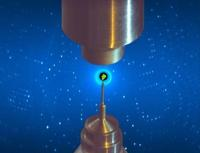Speaker
Description
The protein-protein interactions, namely those between the cationic lactoferrin and the oppositely charged β-lactoglobulin have been the subject of many studies due to their appeal for different food and pharmaceutical applications. These two proteins show some peculiarities in terms of physicochemical properties and behaviour in solutions. Although the hetero-complexation of the proteins is mainly based on non-covalent interactions, a closer look at the interactions involving lactoferrin (LF) and β-lactoglobulin (BLG) reveals fairly unexpectedly behaviour based on a dominating charge regulation mechanism. Electrostatic complexes and even liquid-liquid phase separation have been observed for these proteins thus constituting model systems when examining the influence of experimental variables such as pH, temperature, etc.
Previously, we have shown that human LF exhibits a compact monomeric conformation in solution whilst BLG is predominantly in a dimeric conformation over a broad range of pH from 3 up to 9. With the aim of obtaining additional insights at the molecular level, here we report on the interactions studied by small-angle neutron scattering under temperature conditions and salt addition. Additionally, two different stoichiometric conditions have been regarded as 1:2 and 1:10 (LF:BLG). The results consistently displayed that the complexation between the LF and BLG occurs at pH 5.9 and the LF-2(BLG) hetero-complexes formation takes place.

